Archived Comments
Enjoy the past comments below for The causes of overworking…
Painting is just another way of keeping a diary. ~Pablo Picasso
Overworking seems to be the bain of inexperienced painters. It also has to do with a lack of confidence in handling the medium. Confidence comes with experience. With that said, having a plan or sketch of what you want your work to look like that will help. When you get to the point of what you set out to achieve then you are done. If you don’t get that feeling your work is done set it aside for several days. Bring it out for a renewed look and see if anything else needs to be done to it.
Painting is like cooking veggies. Better undone than overdone.
I too was one who constantly overworked my canvas. I believe it was fear, a lack of knowledge and confidence. It finally clicked, as I obediently did as my mentor had so often recommended. I often heard him in my head; “do your work and planning before committing to your canvas”; but refused to believe that I required to plan, the freshness of the work would disappear, and why so much extra time when I knew what I wanted, in my head. Therefore in frustration and fed up with repainting my work looking for the ultimate masterpiece…. I did the work! What a difference. Planning, sketches, small color studies…. preparation has become my best friend. My mentors voice is constantly in my head and I am definitely grateful to him. Regards Maria Reinhard
I think I’ve always been plagued by a comment my 7th grade math used as her mantra,”Make your best, better!”
Overworking your art can be due to the sheer pleasure of painting! You get into that zen mode and you don’t want it to stop. You’re being creative and it’s awesome. You don’t want the experience of painting to end. You’re having too much fun doing what you love to do so you keep on working – hence overworking. I have stopped myself from overworking a piece, grabbed a second canvas hoping to keep my momentum, and start fresh. But the truth is, so far, that second piece rarely works. My brain has to snap back into ‘blocking in’ mode, not ‘final stages’ mode. It’s a tough transition. Perhaps knowing this, and starting a painting session planning to do two paintings, not just one, will help me, and others, find a way to transfer the zen of painting from one piece to the next! Happy Painting.
Many years ago, I read this: Interviewer: When do you know your painting is done? Picasso: When do you know youre done making love? I find that answer translates well to the Painting, done? question.
I think at some point in the process of painting there is should be an interval of viewing at distance the image on canvas to review it. Is it reflecting the inspiration we had for the painting, checking the colors and perspective and others that was intended to be included. Perhaps we need to set it aside for a while and look at it again at a later time. I have made the same mistake too. It is hard to decide when to stop. But I think when you have reviewed your work and like what you see as close to the picture you had in mind then it’s time to stop. I don’t know if there is a hard and fast rule when to stop. Thanks for the challenge we all have.
I have used this quote many times. “Speak not unless your words enhance the silence”. Now I use “Paint not unless your paint enhances the excitement.”
It takes two people to create a sculpture or any art piece: one to do the work and another to clip the artist around the ear when its finished. Find that other, critical “you”.
Susan Marx’ question is close to my heart, as is your comment about kindergarten children. My first experience with painting was finger painting in kindergarten (age 4.5!) I distinctly remember the room, the table and its placement, and the piece that was giving me so much trouble. Even then I wanted things to look as they are (I’m a realist, can you tell?), and I remember getting frustrated when the teacher said how nice it looked, when I didn’t think so at all. Now some 60 years later, I’m painting exactly what I like – anything and everything – the way I like to paint it. Overworking? Yeah, at times, but who doesn’t. We all try to avoid it but we all have those days and those paintings.
I am often asked by beginning artists “How do you know when the painting is done?” My answer is simple. When putting one more brush stroke will not improve it in any way, I know I am finished.
So, if the painting is really finished, because it is wonderfully spontaneous after 10 minutes, stop !!
I am currently frozen solid at a commission. They want it for the holidays. They have asked for a huge canvas, a particular view (actually the interest is horizontal, yet they ‘need’ a vertical, narrow canvas). And I have, for 6 weeks, avoided putting more paint on the canvas. But today, I’m going to just ENJOY myself. If it doesn’t work, I’ll wipe it off and be no worse off tomorrow. BUT if it goes well, then I’ll be happy and they’ll be happy!
One of my teachers used to say that it takes two to paint a painting; the artist and someone to hit him over the head to tell him it’s done.
Yes, we are all prone to overworking. Great French painter Renoir, when asked the classical question: “When do you stop working on a painting?”, is reported to have answered: “If I am painting a woman’s butt and I feel the urge to tap on it, it means it’s finished”. Congratulations for your Newsletter; it’s always a source of inspiration and reflection.
sometimes you have to live with that dreaded canvas for months, look at at, keep looking at it..then you find the flaws in it ..or in you. Really depends on the mood you are in. I love repainting a canvas, if not just to change the entire mood but changing the colors. To me it all experimental, expect the unexpected and try to remember not to paint inside the lines. I look forward to each and every letter and set time apart to read them. Thanks
I usually consider overworking a painting when another brush stroke will pull off the layers below it, or will create mud. I never considered working on a painting after it was done. If it looks good as good as I figure I am capable of making it, I stop. I only pick up old paintings and work on them again later, if I know I am a better painter by then and can improve the work considerably.
I have a really bad habit of overworking so the easiest thing to do is ask my wife what she thinks. She’s a business woman with no art training or background so when she looks at my work she’s seeing it with a totally unprejudiced eye.She doesn’t know art but she knows what doesn’t work. She can spot areas that need work that I figure are done and she can tell when any more work would start to “muddy” the piece. Always good to get a second opinion.
Adults can over-work. I’m not so sure children can or do. I think they just over-paint, or over-enjoy painting. I can remember my first painting experiences. I just loved to see the brush moving the paint and how painting FELT! I was not very concerned about how the thing looked when I was done. So what I ended up with was ‘over-painted’, however, there was no work. It took a while before the look of a painting mattered much to me. After it did, then I learned to over-work. And ego wasn’t a part of my childlike painting (“Childlike and self-focused, even the mild egotist has little time or inclination for overworking.”), because it wasn’t about me, it was about experiencing something joyous. As an adult ego causes me to over-work, because now I’m more interested in how my paintings will be viewed by others, so it has to be ‘right’. However, I am working on that.
According to different comments on overworking, in my opinion, when we push the mind and the physical activities overboard, we cannot function any more. From time to time, we need to stop thinking , forget the world as it is , take a deep breath and relax. At the end, our mind will clear up and physically we will be able to continue with the brush.
Guilt causes some artists to continue and continue. Elimination of guilt needs to be ‘Job One’
Leonardo began the “Mona Lisa” in 1503. He kept it with him, and would “touch it up” from time to time, until shortly before his death in 1519.
I often think overworking has something to do with an individual’s degree of patience. Many painters simply grow bored with a work and abandon it when they have established the main idea or said what they wanted to say. Others with more staying power or perhaps a greater need for perceived perfection, stay with the job. Some, it has to be said, stay with it until the results are really good.
In Watercolor, the tolerance for overworking is minimal Do not redo a brush stroke. Work from the top of the sheet to the bottom and stop: never go back. If you think of a smaller brush, stop.
I am not sure we can talk about overworking in reference to 5 year olds. “Overworking” implies that there is an ideal state at which one could/should stop to keep from ruining a product. Are young children investing in product or process? I suspect their main business is learning through play.
I did not know when to stop so I was loosing the feel I had originally in my head. After years of painting the simplicity is allowing my true meaning to come out.
A little Haydn helps–he never did too little or too much.
Brian. Beautiful work. I completely know the dread of creative death and loved reading Robert’s thoughts on it. Almost funny though when I see your strong paintings. Hard to believe you ever have trouble. Keep up the good work. All best. Cynthia
Hey, Susan, you go girl…because you know when to stop! I’ll never forget being at Bonnie’s with you and Elyse in August. My intent was to wake up early and go out to paint with you. But by the time I’d stumbled down the stairs, you’d already finished your painting. Just so everyone knows, not only does Susan know when to stop, she also knows how to start!!! XO B
Think Spring! Your feelings may be due to depression from the present climate in the Highlands. I always feel that way on a dark , dreary day. Now that days are longer, darker, light the lights, get a daylight lamp, play some Christmas Carols and start making some of great designs for small gifts in the form of cards.
really great work Brian! please don’t give up, the world needs to see your work!
For me this is POST PARTY BLUES…..After a great weekend, party, workshop or family event the high is gone….. So this is to be expected….. Returning to responsibilities, unfinished artwork or a messy crappy studio can also sap energy…… Define the aspects of the event that you loved..plan specific time to re-experience and try to include them in your everyday life….like a planned “play date”… for me it is usually that I miss the camaraderie…. Trying to find fellow artists on the same wavelength can be difficult…. When I feel this I have to go to a gallery, call a fellow artist or plan a playful project…. Hope you can find a toy to bring back this child like enthusiasm….Best wishes…. I am preaching to myself as well.
Just keep your eyes open and you will know when to stop. Sometimes I am sitting there with my brush poised over a section of the painting when I suddenly realize that the underpainting or loose passage as it exists is already very beautiful. Eventually, I run out of things to ‘fix’ and I know I am done.
Thank you for all of your wonderful letters dealing with so many of the issues that plague us artists and creative types. It is so easy to relate to this piece on overworking. It is such a temptation (especially painting en plein air) to dab a painting into oblivion instead of stopping while it is still fresh and spontaneous. Also, having just gone through a difficult move back to Houston after living and painting on St. Croix USVI for over 5 years, I am having trouble getting back into painting. Usually, I jump start my art by putting my paper or canvas on my easel and make a few first marks. Then before I know it I am painting again. Have had many distractions since my return and really need that alone time to fuel my creative energy.
THANKS. OVERWORKING IS OFTEN MY PROBLEM.
We are all at different stages of development so we have to take what we do with “action of forethought”. What I mean is we have to stop beating ourselves over the head if we don’t produce the exact piece we intended. Or if the session didn’t go as we planned. Real art is achieved with thought, deliberation and planning. Even those pieces we think are dashed off by painters we believe are better or more experienced than us. This first time idea is a fallacy. Agreat painting done in an hour or less has more thought and understanding than we think. If we are in the moment, overworking vanishes. If, as someone said we put too many “extra” strokes, we can remove them. With experience, we learn what it takes to paint a great picture. If we know where we’re going, when we get there, we stop. It becomes instinctive. Painting is not a mindless, ethereal, blind experience. It takes planning and thought. Sometimes a happy accident happens and you hit it right, but this happen rarely. The best work by the best artists is deliberate and with conscious effort no matter the time it took to create. When your experience level soars, you reach your goal more quickly and effectively.
I draw pencil portraits and they usually turn out pretty good, but I have a tendency to overwork them and I erase and erase and erase until I can’t erase what I’ve done. Which in turn ruins my drawings. They look messy! I don’t know why I do this? I usually start a drawing by drawing the out line of the head and then start with eyes, nose and mouth. But…I get stuck! I will start with one eye and I try to copy every detail from the picture I drawing from. Like I said, I get stuck and also…I am a perfectionist. It just doesn’t look right/ The shapes, shadows, contouring and such. I could really use some tips? I took a couple Art Classes and went to Art School for about a month, but that was 20 years ago. I stopped drawing for about 15 years and recently picked it back up. I know I have the talent to be really good but this overworking is ruining my art!


Mankite oil painting, 36 x 48 inches by Joseph Marmo, Stuart, FL, USA |




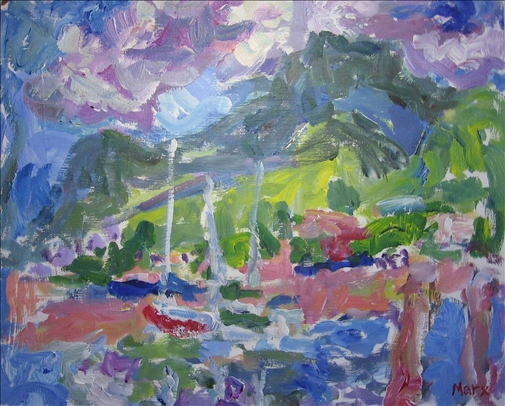
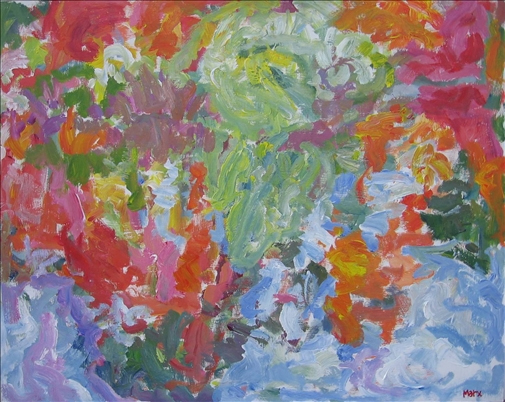
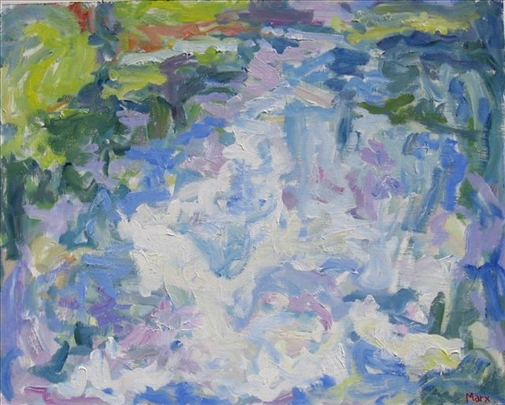
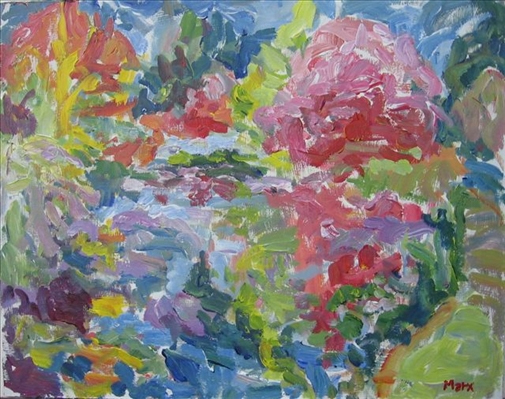











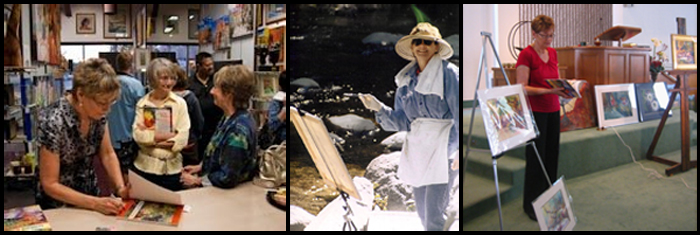




That comment by your friend Marc Channon, is on the button for me. There was I, someone who hasn’t had children, on occasion grousing about parent’s perfectionism and inability to let go of their children …and I’m doing the same thing with creative work! Thanks for the tip….I can now be conscious of that.